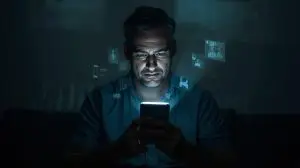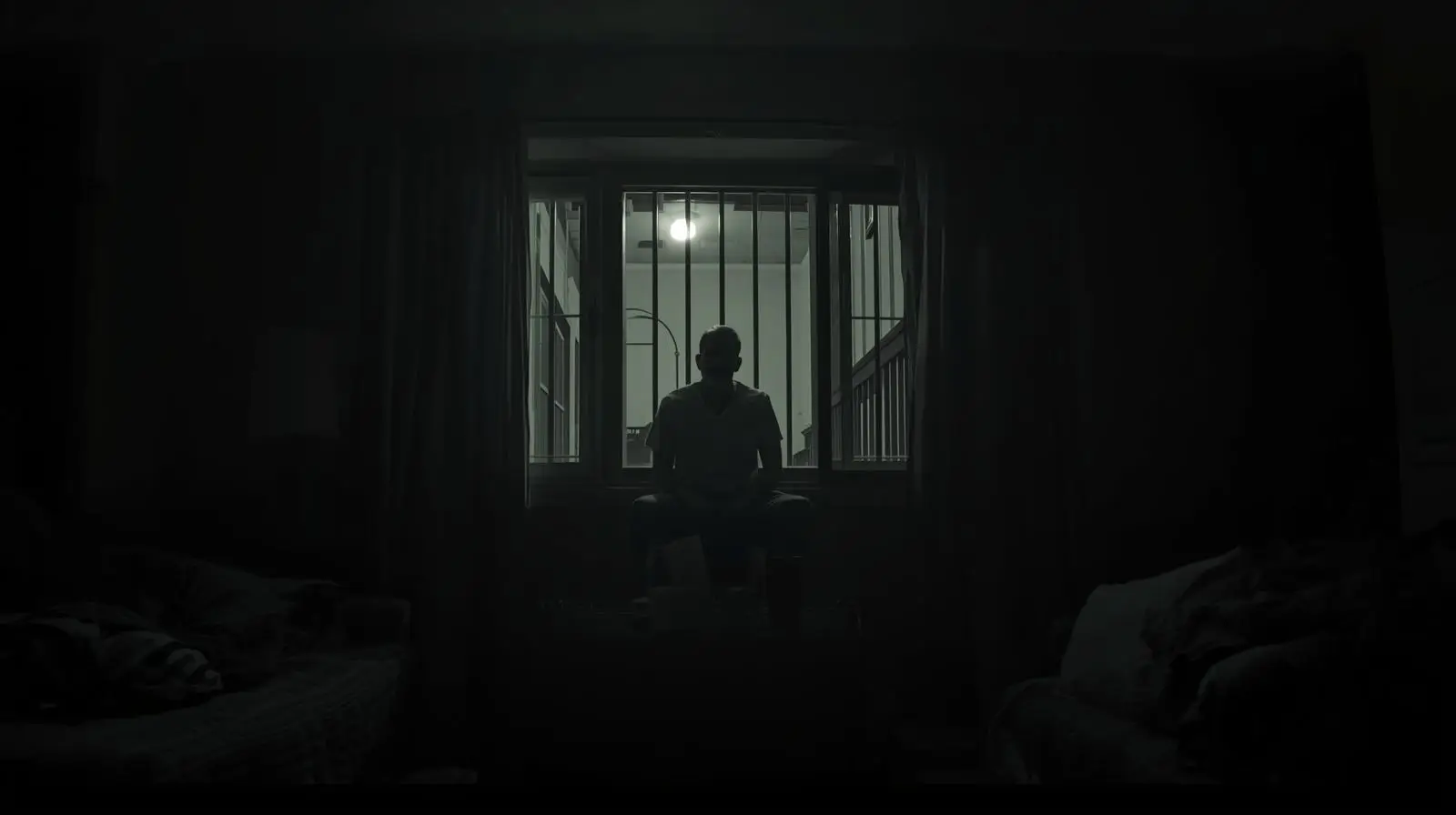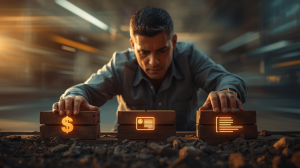Originally posted January 24, 2021
Ever wondered what it feels like to step into the world after spending half your life behind bars? That was me on Friday, January 22nd, 2021. After 8,760 days — 24 years — of incarceration, I was finally released to home detention. Surreal doesn’t even begin to capture the emotional earthquake of that moment.
The Final Morning
Sleep had abandoned me entirely my final night in prison. The weight of anticipation pressed down like a physical force, making rest impossible. In the pre-dawn darkness of the dormitory, surrounded by 127 other men still trapped in their own countdowns, I lay there processing the reality that this chapter was ending.
The morning itself started with a complex mixture of emotions I struggle to articulate even now. My closest friend — a man who had served 20 years alongside me and understood my journey better than anyone — helped carry my property to the processing area. We exchanged a look that held two decades of shared experience, brotherhood forged in the crucible of confinement. Our hug was brief but profound, a silent acknowledgment that our paths were diverging. He returned to his dorm, and I walked toward a door I hadn’t passed through in over two decades.
The Bureaucracy of Freedom
The release coordinator, a man who had processed thousands of these transitions, asked his routine questions and handed me my release packet. Inside were my diplomas, certificates, and other accomplishments — tangible proof that the years hadn’t been entirely lost. He also provided a debit card loaded with my reentry funds, a modest sum that represented my financial foundation for rebuilding.
Next came the creation of my prison release ID — a simple piece of plastic that would become one of my most treasured possessions. Seeing the word “RELEASED” printed next to my photograph was a moment of profound symbolism. One chapter closing, another beginning. The weight of that plastic card in my hand felt heavier than any diploma I’d earned inside.
They provided me with a set of used street clothes: blue jeans and a sweatshirt. After 24 years of institutional uniforms, these simple garments felt like a costume for a role I was still learning to play. The fabric felt different against my skin — softer, more human somehow.
The final step was identity verification by one of the prison lieutenants, a formality that carried surprising emotional weight. Then the county sheriff shackled me one last time and escorted me to his vehicle. I carried a single small box containing everything I owned in the world — a stark reminder of how much rebuilding lay ahead.
The Journey Home
As we pulled away from the facility, I allowed myself one last look back. The gray walls and razor wire that had defined my world for so long grew smaller in the side mirror until they disappeared entirely. Mixed emotions flooded through me — relief, gratitude, survivor’s guilt for those still inside, and an overwhelming sense of unreality.
The drive was both relaxing and charged with anticipation. The sheriff proved to be good company, but I found myself mostly staring at scenery that had continued evolving without me. Everything looked subtly different — newer cars, updated storefronts, technology I couldn’t identify. I was already formulating a mental to-do list, though I needed more information before making concrete plans.
After about an hour, we arrived at the probation office where the next phase of my controlled freedom would begin.
Unshackled but Not Free
The sheriff removing my shackles created another powerful moment of transition. For the first time in 24 years, I stood in the free world unbound. Yet true freedom remained elusive — I was about to trade one form of confinement for another.
The home detention process began with a drug test, which I passed without concern. Drugs had long ago ceased being part of my story. They asked questions, explained rules, required signatures, and then clamped a GPS monitoring device around my ankle. The electronic tether would become my constant companion, a reminder that my liberty remained conditional.
Standing on the sidewalk outside the probation office, my property in hand, I felt momentarily overwhelmed. The sensory assault was real — traffic sounds I hadn’t heard in decades, the smell of exhaust and fast food, the visual chaos of a world that had moved on without me. But it wasn’t the crushing overload I’d anticipated. Instead, it felt like awakening from a very long dream.
Home, But Not as I Remembered
My dad and his caretaker were waiting to take me home. The drive was short, but every familiar landmark had changed just enough to feel foreign. When we pulled into the driveway of the house I’d left 24 years earlier, my first impression was how much smaller everything seemed. Four years of living in an open dormitory had recalibrated my sense of space. Walking into enclosed rooms felt oddly confining.
But there was no time for reflection — we had essential errands to run.
The Walmart Revelation
For years, I’d imagined that my first supermarket experience would be overwhelming sensory assault. The reality proved quite different. Walking into Walmart was actually enjoyable — a feast for eyes that had been starved of choice and variety.
My first purchase was a smartphone, an expensive but necessary bridge to the modern world. When I’d been incarcerated in 1997, the height of my cellular experience was a pager. The internet was in its infancy, nothing like the ubiquitous presence it had become. With patient help from my dad’s caretaker, I activated my phone and officially rejoined civilized society.
I kept expecting other shoppers to somehow sense my history, to see “recently released convict” written across my face. Instead, they regarded me as just another customer, which provided an unexpected sense of belonging and acceptance.
My shopping list revealed how much I’d taken for granted: clothes, toiletries, a hat, gloves, and — surprisingly — a wallet. The wallet was a particularly striking realization. I hadn’t even considered needing one until my probation officer mentioned it. For 24 years, I’d had no need for such mundane necessities.
I also experienced my first self-checkout station, technology that hadn’t existed when I went in. The learning curve was steep but manageable — a preview of the countless adaptations ahead.
Digital Reintegration
Once home, I dove headfirst into establishing my digital presence. Creating my first email address felt monumental — suddenly I had an identity in cyberspace. Setting up Facebook and Twitter accounts connected me to a world I’d only heard about secondhand.
Reaching out to family and friends unleashed a flood of responses that kept my phone buzzing incessantly. The Last Mile, the organization that had trained me as a web developer while incarcerated, immediately welcomed me home through their reentry support network. The technology that hadn’t existed during my incarceration now made everyone I loved accessible with a few taps.
I spent hours exploring the internet, setting up accounts, and marveling at the digital playground that had evolved in my absence. My mind raced with possibilities for the websites I wanted to build, the projects I could tackle, the connections I could make.
Sleepless in Freedom
Sleep proved elusive that first night, just as it had been my final night inside. My brain was overloaded with new information, processing experiences at a rate that made rest impossible. The silence of the house felt foreign after years of constant institutional noise. Every creak and settling sound was amplified in the darkness.
But these were good problems to have. For the first time in 24 years, my insomnia was caused by excitement and possibility rather than fear and hopelessness.
The Documentation Begins
On my second day out, I began documenting this journey. Even then, I was still sorting through thoughts clouded by sleep deprivation and emotional overload. I made a promise to myself and to anyone who would follow this story: I would reveal everything — the triumphs and failures, the embarrassing moments and the victories, the setbacks and the breakthroughs.
This documentation isn’t just for others navigating similar transitions. It’s for my future self, a record of transformation that began with that first night of freedom. It’s proof that even after 24 years, the human capacity for adaptation and growth remains intact.
The road ahead was uncertain, filled with challenges I couldn’t yet imagine. But as I lay in bed that first night, listening to the sounds of freedom filtering through my bedroom window, I knew one thing with absolute certainty: I was home, and the real work of rebuilding was just beginning.
Three days of freedom and counting. The mirror may still be shadowed, but it’s starting to reflect something new — something hopeful.




